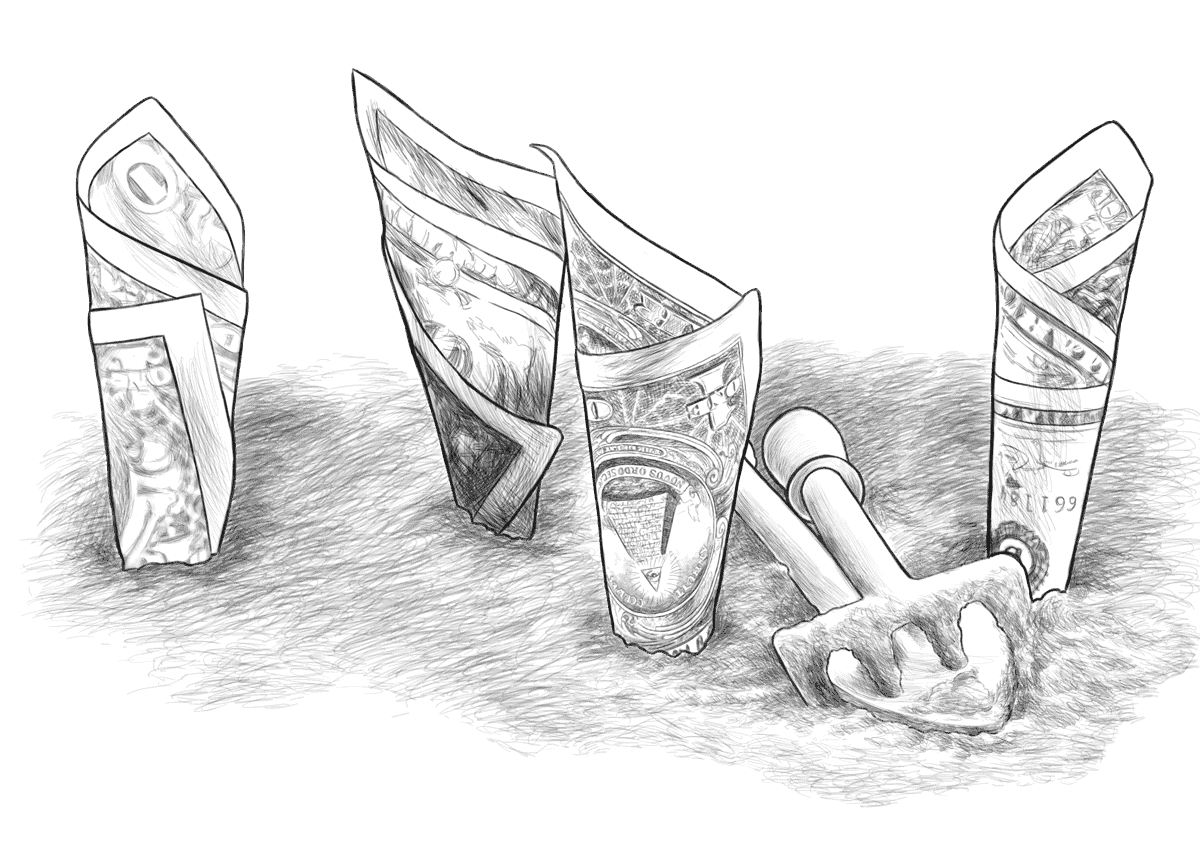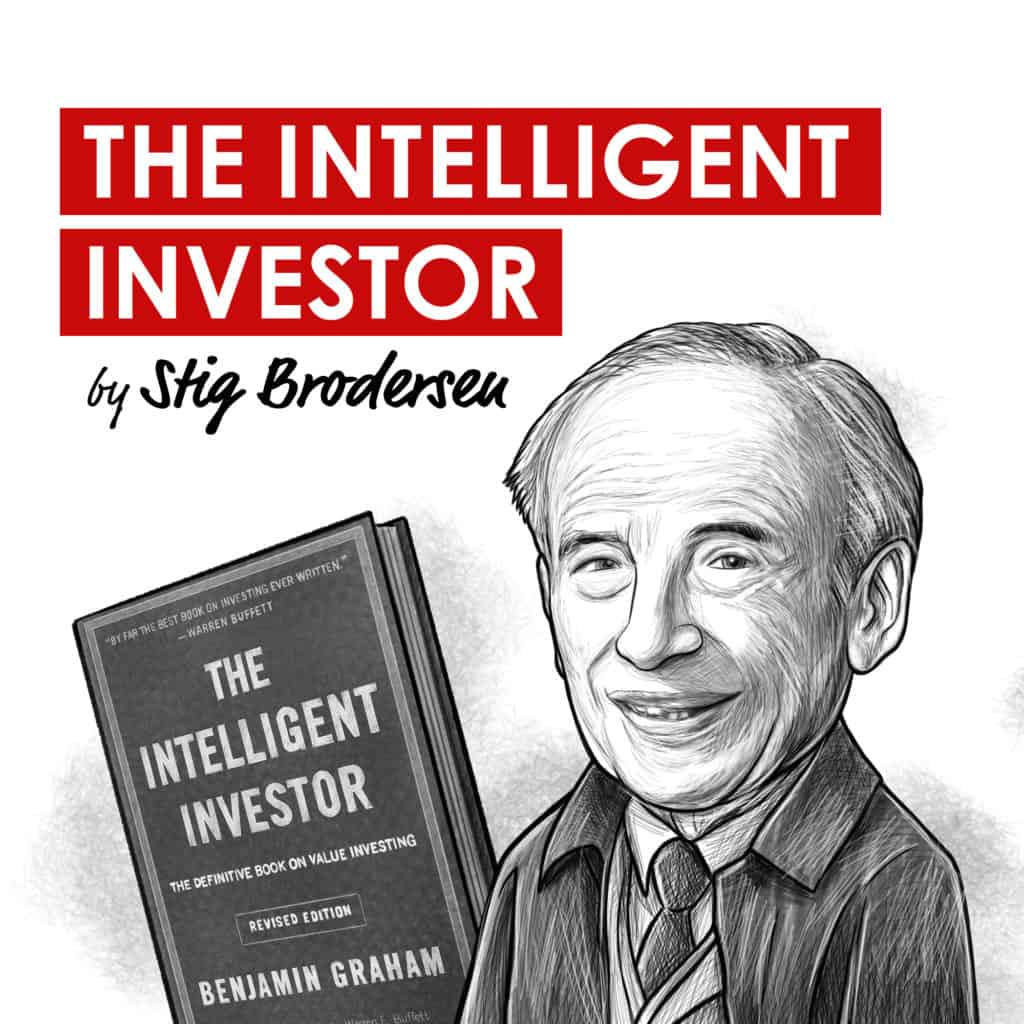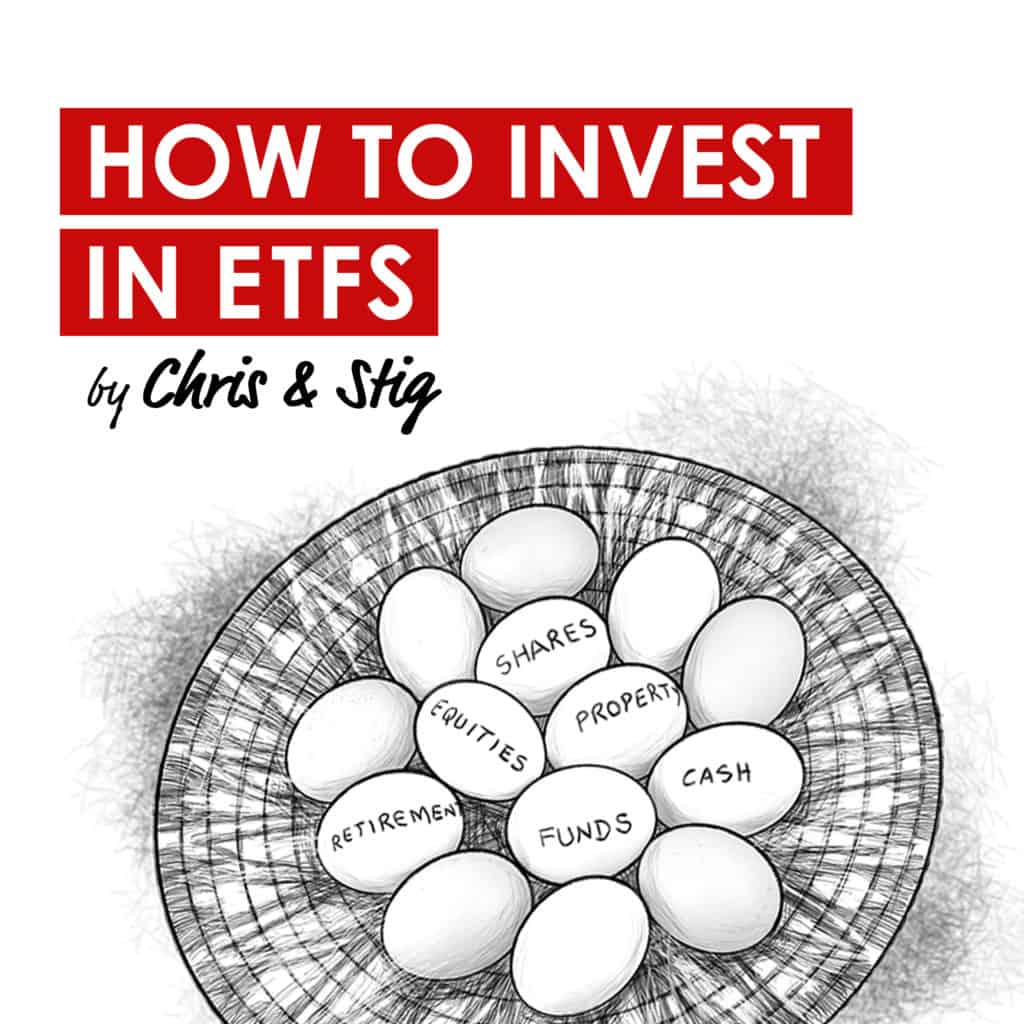Investment And Finance Terms

Knowing the definition and formula of basic investing and financial terminologies can help new investors and entrepreneurs with their day-to-day transactions. This is especially important when they are trying to analyze their financial statements.
Listed here are the most common investment and financial terms every investor should know.
WHAT IS REVENUE?
Revenue is the amount of money generated by a company for selling goods or providing services, net of any returns.
Formula: Revenue = (Quantity Sold x Price) – Returns
WHAT IS GROSS MARGIN PERCENTAGE?
Gross margin % is the amount of money left over from revenue after paying for the costs directly related to the product or service sold by the company as a percentage of Revenue.
Formula: Gross Margin % = ((Revenue – Cost of Revenue) / Revenue) x 100
WHAT IS OPERATING INCOME?
Operating Income is the amount of money leftover from Gross Margin after paying for all operating expenses of the business.
Formula: Operating Income = Gross Margin – Operating Expenses
WHAT IS OPERATING MARGIN PERCENTAGE?
Operating Margin % is the amount of money leftover from Gross Margin after paying for all operating expenses of the business as a percentage of Revenue.
Formula: Operating Margin % = (Operating Income / Revenue) x 100
WHAT IS NET INCOME?
Net Income is the amount of profit left over after all expenses have been paid.
It is important to note that due to non-cash items included on the Income Statement and Capital Expenditure investments, Net Income rarely is the amount of cash that is truly leftover at year-end for a business.
Formula: Net Income = Operating Income – (Interest Expense + Depreciation and Amortization + Other Income/Expense + Taxes)
WHAT IS EARNINGS PER SHARE (ESP)?
Earnings Per Share is the net income generated by the company spread over the total number of shares outstanding.
Formula: Earnings Per Share = Net Income / Total Shares Outstanding
WHAT ARE DIVIDENDS?
Dividends are money that is distributed from a company to its shareholders.
Formula: Dividends = Net Income x Payout Ratio
WHAT IS PAYOUT RATIO?
The Payout Ratio is the percentage of a company’s net income paid out as dividends to shareholders.
Formula: Payout Ratio =Dividends / Net Income
WHAT ARE SHARES?
Shares are synonymous with Total Number of Shares Outstanding, or Total Shares Outstanding, which refers to the number of pieces a company’s ownership is split into.
Formula: Shares = Market Cap / Share Price
WHAT IS BOOK VALUE PER SHARE?
Book Value Per Share is the value of a company’s assets, minus its intangible assets and related accumulated depreciation spread over the total number of shares outstanding.
Formula: Book Value Per Share = Book Value / Shares or (Total Assets – (Intangible Assets + Liabilities)) / Shares
WHAT IS OPERATING CASH FLOW?
Operating Cash Flow is the amount of cash (not profits) the company generates from its typical operating activities.
Formula: Operating Cash Flow = Net Income + Non-Cash Expenses – Increase in Working Capital
WHAT IS CAPITAL SPENDING OR CAPITAL EXPENDITURES (CAPEX)?
Cap Spending, also known as Capital Expenditures (CapEx), are investments a company makes in its fixed assets.
Formula: Cap Spending = Current Period’s Property, Plant & Equipment – Prior Period’s Property, Plant & Equipment + Depreciation
WHAT IS FREE CASH FLOW?
Free Cash Flow is the amount of cash left over after a business has paid all of its expenses and made reinvestments in the business.
Formula: Free Cash Flow = Operating Cash Flow – Cap Spending
WHAT IS FREE CASH FLOW PER SHARE?
Free Cash Flow Per Share is the amount of cash left over after a business has paid all of its expenses and made reinvestments in the business spread over the total number of shares outstanding.
Formula: Free Cash Flow Per Share = Free Cash Flow / Shares
WHAT IS WORKING CAPITAL?
Working Capital is the money that can be used to cover a company’s short-term costs and is typically a measure of a company’s liquidity.
Formula: Working Capital = Current Assets – Current Liabilities
WHAT IS COST OF REVENUE OR COST OF SALES?
Cost of Revenue is the total of all costs directly related to the product or service sold by the company.
Formula: Cost of Revenue = (Quantity Sold x Cost Per Unit) – Returns
WHAT IS GROSS PROFIT?
Gross profit is the amount of money left over from revenue after paying for the costs directly related to the product or service sold by the company.
Formula: Gross Profit = Revenue – Cost of Revenue
WHAT IS SELLING, GENERAL & ADMINISTRATIVE (SG&A) EXPENSE
Selling, General & Administrative Expense or simply SG&A, is inclusive of all costs associated with the operation of a business.
Formula: Selling, General & Administrative Expense = Selling Expenses + Marketing Expenses + Rent + Property Taxes + Utilities + Salaries + Benefits
(Note: These are examples of expenses that are classified as SG&A)
WHAT ARE RESEARCH AND DEVELOPMENT EXPENSES?
Research & Development (R&D) Expense, refers to the total of all costs related to improving existing products, developing new products, or creating intellectual property.
WHAT IS EARNINGS BEFORE TAX OR EBT MARGIN??
EBT Margin, also known as Earnings Before Tax Margin or Pretax Margin, is the amount of money leftover after all expenses have been paid and non-cash items have been deducted, except for taxes.
Formula: EBT Margin = Net Income + Taxes or Operating Income – (Depreciation & Amortization + Interest Expense + Other Income/Expense)
WHAT IS TAX RATE (%)?
Tax Rate is the percentage of a company’s profits that must be paid towards taxes.
Formula: Tax Rate = Taxes / EBT Margin
WHAT IS NET MARGIN (%)?
Net Margin % is the amount of profit left over after all expenses have been paid as a percentage of Revenue.
Formula: Net Margin % = (Net Income / Revenue) x 100
WHAT IS ASSET TURNOVER?
Asset Turnover is a measure of a company’s efficiency that compares its revenue to its total assets.
Formula: Asset Turnover = Revenue / ((Beginning Assets + Ending Assets) / 2)
WHAT IS RETURN ON ASSETS (%)?
Return on Assets (%) is the amount of profits generated by a company as a percentage of its total assets.
Formula: Return on Assets = (Net Income / Total Assets) x 100
WHAT IS RETURN ON EQUITY (%)?
Return on Equity (%) is the amount of profits generated by a company as a percentage of its total equity.
Formula: Return on Equity = (Net Income / Avg. Shareholders’ Equity) x 100
WHAT IS RETURN ON INVESTED CAPITAL (%)?
Return on Invested Capital is a measure of how efficiently a company is allocating its resources to generate profits.
Formula: Return on Invested Capital = (Net Income – Dividends) / (debt + equity) or NOPAT / Invested Capital
WHAT IS INTEREST COVERAGE?
Interest Coverage is a measure of how many times a company could pay its interest expense with its Earnings Before Interest and Taxes.
Formula: Interest Coverage = EBIT / Interest Expense
WHAT IS CASH & SHORT-TERM INVESTMENTS?
Cash & Short-Term Investments are liquid assets that a company can use to pay its expenses in the near future.
WHAT ARE ACCOUNTS RECEIVABLES?
Accounts Receivables are money owed to a company for products or services provided that have not yet been paid for.
WHAT IS INVENTORY?
Inventory is the amount of a company’s product currently held on hand that has not yet been sold.
WHAT ARE TOTAL CURRENT ASSETS?
Current Assets are all of the items of value a company owns that are expected to be used, spent, or converted to cash, within the next year.
WHAT IS NET PROPERTY PLANT AND EQUIPMENT OR NET PP&E?
Net Property, Plant & Equipment or Net PP&E is the value of a company’s fixed assets after netting out depreciation.
Formula: Net PP&E = Property, Plant & Equipment – Depreciation
WHAT ARE INTANGIBLES?
Intangibles are assets a company owns that are not physical.
WHAT DOES TOTAL ASSETS MEAN?
Total Assets refer to the sum of all items owned by a company.
Formula: Total Assets = Current Assets + Long-Term Assets
WHAT ARE ACCOUNTS PAYABLE?
Accounts Payable is money owned by the company to another party for products or services it purchased but has not yet paid for.
WHAT IS SHORT-TERM DEBT?
Short-Term Debt is the portion of a loan or liability that a company is expecting to pay within the next year.
WHAT ARE TOTAL CURRENT LIABILITIES?
Total Current Liabilities are the total of all debts that a company is expecting to pay within the next year.
Formula: Total Current Liabilities = Short-Term Debt + Accounts Payable + Capital Leases + Taxes Payable + Other Current Liabilities
WHAT IS LONG-TERM DEBT?
Long-Term Debt is the portion of a loan or liability that a company doesn’t expect to pay within the next year.
WHAT ARE OTHER LONG-TERM LIABILITIES?
Other Long-Term Liabilities are debts a company must repay but doesn’t expect to within the next year.
WHAT ARE TOTAL LIABILITIES?
Total Liabilities are the total of all debts and liabilities owed by a company.
Formula: Total Liabilities = Total Current Liabilities + Total Long-Term Liabilities
WHAT IS TOTAL STOCKHOLDERS’ EQUITY?
Total Stockholders’ Equity is like the net worth of a business — it is the value of its assets after subtracting its total liabilities.
Formula: Total Stockholders’ Equity = Total Assets – Total Liabilities
WHAT IS TOTAL LIABILITIES & EQUITY?
Total Liabilities & Equity is the total value of all of a company’s liabilities plus its equity.
Formula: Total Liabilities & Equity = Total Assets
WHAT IS THE CURRENT RATIO?
The Current Ratio is a measure of a company’s liquidity by putting a numerical value on its ability to pay its short-term liabilities.
Formula: Current Ratio = Current Assets / Current Liabilities
WHAT IS THE QUICK RATIO?
The Quick Ratio is a measure of a company’s liquidity by putting a numerical value to its ability to pay its short-term liabilities without using its current inventory.
Formula: Quick Ratio = (Current Assets – Inventory) / Current Liabilities
WHAT IS THE INTEREST COVERAGE RATIO?
The Interest Coverage Ratio is a measure of how many times a company could pay its interest expense with its Earnings Before Interest and Taxes.
Formula: Interest Coverage Ratio = EBIT / Interest Expense
WHAT IS DEBT/EQUITY?
Debt/Equity, also known as Debt-to-Equity or Debt-to-Equity Ratio, is how much debt a company has as a percentage of its total equity.
Formula: Debt/Equity = Debt / Total Equity
WHAT ARE RECEIVABLES TURNOVER?
Receivables Turnover, also known as Accounts Receivable Turnover, is a measure of a company’s efficiency by looking at how many times a company’s receivables are turned into cash in a given period.
Formula: Receivables Turnover = Net Credit Sales / Avg. Accounts Receivable
WHAT IS INVENTORY TURNOVER?
Inventory Turnover, also known as Inventory Turnover Ratio, is a measure of how many times a company sold and replaced its inventory.
Formula: Inventory Turnover = Cost of Revenue / ((Beginning Inventory Balance + Ending Inventory Balance) / 2)
WHAT ARE OPERATING EXPENSES?
Operating Expenses are all expenses that are incurred to run the business, excluding the cost of revenue.
Formula: Operating Expense = R&D + SG&A + Other Operating Expenses
WHAT IS INTEREST EXPENSE?
Interest Expense is the amount of interest paid to a lender over a given period. Interest is an additional charge on top of the initial amount borrowed by a lender for the borrower’s use of an asset (often cash).
WHAT IS INCOME BEFORE TAXES?
Income Before Taxes, also known as EBT Margin, Earnings Before Tax Margin, or Pretax Margin, is the amount of money leftover after all expenses have been paid and non-cash items have been deducted, except for taxes.
Formula: Income Before Taxes = Net Income + Taxes or Operating Income – (Depreciation & Amortization + Interest Expense + Other Income/Expense)
WHAT IS PROVISION FOR INCOME TAXES?
Provision for Income Taxes is the amount a company expects to pay in taxes.
Formula: Provision for Income Taxes = Tax Rate x Income Before Taxes
WHAT IS NET INCOME AVAILABLE TO COMMON SHAREHOLDERS?
Net Income Available to Common Shareholders is the amount of profit left over after all expenses have been paid that common shareholders have the rights to.
Formula: Net Income Available to Common Shareholders = Net Income – Preferred Dividends or Operating Income – (Interest Expense + Depreciation & Amortization + Other Income/Expense + Taxes + Preferred Dividends)
WHAT IS BASIC EARNINGS PER SHARE?
Basic Earnings Per Share is the net income generated by the company spread over the total number of shares outstanding.
Formula: Basic Earnings Per Share = Net Income / Total Shares Outstanding
WHAT IS DILUTED EARNINGS PER SHARE?
Diluted Earnings Per Share is the net income generated by the company spread over the total number of shares outstanding after paying all preferred dividends.
Formula: Diluted Earnings Per Share = (Net Income – Preferred Dividends) / Total Share Outstanding
WHAT IS BASIC SHARES OUTSTANDING?
Basic Shares Outstanding is the term used most commonly when describing the total number of shares outstanding, which is the number of pieces a company’s ownership is split into.
Formula: Basic Shares Outstanding = Market Cap / Share Price
WHAT IS DILUTED SHARES OUTSTANDING?
Diluted Shares Outstanding is the number of pieces a company’s ownership would be split into if all outstanding stock options were exercised and converted into shares.
Formula: Diluted Shares Outstanding = Basic Shares Outstanding + Outstanding Stock Options
WHAT IS CASH & CASH EQUIVALENTS?
Cash & Cash Equivalents are liquid assets that a company can use to pay its expenses in the near future.
WHAT ARE CURRENT INVESTMENTS?
Current Investments are short-term assets owned by a company that can be, or are expected to be, sold within the next year that can be used to pay its near-time expenses.
WHAT IS TOTAL CASH?
Total Cash is the total amount of assets that are as liquid as cash, or are considered cash-like.
Formula: Total Cash = Cash & Cash Equivalents + Short-Term Investments + Other Short-Term Investments
WHAT ARE NON-CURRENT ASSETS?
Non-Current Assets are all of the items of value a company owns that are not expected to be used, spent, or converted to cash, within the next year.
WHAT ARE INVESTMENTS?
Investments are assets that a company purchased with the expectation of holding, or gaining, value that it doesn’t expect to sell within the next year.
WHAT ARE DEFERRED REVENUES?
Deferred Revenues, also known as Unearned Revenues, is the amount of money a company has received for its products or services that it has not yet given to the customer.
WHAT ARE TOTAL NON-CURRENT LIABILITIES?
Total Non-Current Liabilities are the total of all debts that a company has that it does not expect to pay within the next year.
Formula: Total Non-Current Liabilities = Long-Term Debt + Other Long-Term Liabilities
WHAT ARE ACCUMULATED RETAINED EARNINGS?
Accumulated Retained Earnings are the profits a company has earned that it has not paid out to its shareholders since inception.
Formula: Accumulated Retained Earnings = Beginning Retained Earnings + Current Period’s Profit/Loss – Current Period Dividends
WHAT IS ACCUMULATED OTHER COMPREHENSIVE INCOME?
Accumulated Other Comprehensive Income is the amount of income a company has generated from abnormal, or non-recurring, items since its inception.
Formula: Accumulated Other Comprehensive Income = Beginning Other Comprehensive Income + Current Period’s Other Comprehensive Income
WHAT IS DEPRECIATION & AMORTIZATION?
Depreciation is an accounting expense that allows a company to incur the costs of fixed assets over its useful life. Amortization is the same type of expense, except it is for intangible assets.
WHAT IS CASH FLOW FROM INVESTING ACTIVITIES?
Cash Flow from Investing Activities is a section of a company’s Cash Flow Statement that shows the amount of cash generated from a company’s investing activities.
Formula: Cash Flow from Investing Activities = Net Business Acquisitions and Disposals + Net Purchase/Sale of Investments
WHAT IS NET BUSINESS ACQUISTIONS AND DISPOSALS?
Net Business Acquisitions and Disposals is the amount of cash a company spent or received from selling or acquiring businesses over a given period of time.
Formula: Net Business Acquisitions and Disposals = Cash Received for Disposals – Cash Paid for Acquisitions
WHAT IS CASH FLOW FROM FINANCING ACTIVITIES?
Cash Flow from Financing Activities is a section of a company’s Cash Flow Statement that shows the amount of cash generated from a company’s financing activities.
Formula: Cash Flow from Financing Activities = (Issuance of Debt + Issuance of Stock) – (Repayment of Debt + Payment of Dividends + Other Cash Distributions + Share Buybacks)
WHAT IS NET BUSINESS ACQUISTIONS AND DISPOSALS?
Net Business Acquisitions and Disposals is the amount of cash a company spent or received from selling or acquiring businesses over a given period of time.
Formula: Net Business Acquisitions and Disposals = Cash Received for Disposals – Cash Paid for Acquisitions
WHAT IS ISSUANCE (REPAYMENT) OF DEBT SECURITIES?
Issuance (Repayment) of Debt Securities is the amount of cash a company received from the debt it issued, or the amount of cash it spent repaying debt.
Formula: Issuance (Repayment) of Debt Securities = Debt Issued – Debt Repaid
WHAT IS PAYMENT OF DIVIDENDS & OTHER CASH DISTRIBUTIONS?
Payment of Dividends & Other Cash Distributions is the amount of money distributed to shareholders.
Formula: Payment of Dividends & Other Cash Distributions = Dividends + Other Cash Distributions
WHAT IS NET ISSUANCE OF/PAYMENT FOR COMMON STOCK?
Issuance (Repayment) of Debt Securities is the amount of cash a company received from the debt issued or the amount of cash it spent repaying debt.
Formula: Net Issuance of/Payment for Common Stock = Cash Received from Issuing Shares – Cash Spent on Share Buybacks
WHAT ARE EFFECTS OF EXCHANGE RATE CHANGES ON CASH?
Effects of Exchange Rate Changes on Cash is the amount of money a company made or lost due to fluctuations in exchange rates.
WHAT IS THE UPPER BAND (UB)?
The Upper Band (UB) is the highest growth rate you expect the company to achieve.
WHAT IS THE MOST LIKELY (ML)?
The Most Likely (ML) is the growth rate that you think is most likely to be achieved by the company.
WHAT IS THE LOWER BAND (LB)?
The Lower Band (LB) is the lowest growth rate that you expect the company to achieve.
WHAT IS THE START POINT FOR FUTURE FREE CASH FLOWS?
The Start Point for Future Free Cash Flows is the Free Cash Flow amount that you would like your calculations to be based on, or start with if it’s different than the most recent year’s Free Cash Flow figure.
WHAT IS THE CURRENT MARKET PRICE?
The Current Market Price is the price of one share of stock for this company right now in the stock market.
WHAT IS THE IRR OF EXPECTED RATE OF RETURN?
The IRR of Expected Rate of Return is the estimated annual rate of return for an investment based on the input values in the calculator.
WHAT IS GROWTH PERCENTAGE?
Growth % is the percentage you believe free cash flow will grow for this company over the next 10 years.
WHAT IS LIKELIHOOD PERCENTAGE?
Likelihood % is the percent chance you believe the corresponding growth rate you used will actually be achieved over the next 10 years.
WHAT IS A STOCK TICKER?
A Stock Ticker is a short combination of letters meant to distinguish different companies for trading in the stock market.
WHAT IS THE 10-YEAR TREASURY YIELD?
The 10-Year Treasury Yield is the current rate of return received if a 10-year Treasury note is purchased.
WHAT IS A SIMPLE EXPECTED YIELD FOR S&P 500?
The Simple Expected Yield for S&P 500 is the estimated annual rate of return for the next 10 years for the S&P 500 index based on its current earnings and price.
WHAT IS A SIMPLE YIELD ESTIMATE FOR ___ AT CURRENT PRICE?
The Simple Yield Estimate for __ at Current Price is the estimated annual rate of return for this company for the next 10 years based on its current free cash flows, price, and growth rates.
WHAT IS NET PURCHASE/SALE OF INVESTMENTS?
Net Purchase/Sale of Investments is the amount of cash a company spent or received from selling or acquiring investments over a given period of time.
Formula: Net Purchase/Sale of Investments = Cash Received for Sales – Cash Paid for Investments
WHAT IS P/E RATIO?
The Price-to-Earnings Ratio (P/E Ratio) compares the current price of a stock to how much it earned per share.
Formula: Price-to-Earnings Ratio = Stock Price / EPS
OTHER RESOURCES
This resource is provided for the TIP community’s educational benefit. Check out these podcast shows, courses, and other free resources on investing, business and finance.
Read our article on How to Invest in Stocks: The Ultimate Guide for Beginners.
Below are in-depth modules on popular investing course:
- Intrinsic Value Course – Learn how to value a stock or business.
- How To Invest in ETFs – Learn the basics of investing in Exchange Traded Funds.
- The Intelligent Investor – Breaking down Benjamin Graham’s bestselling book on value investing.







